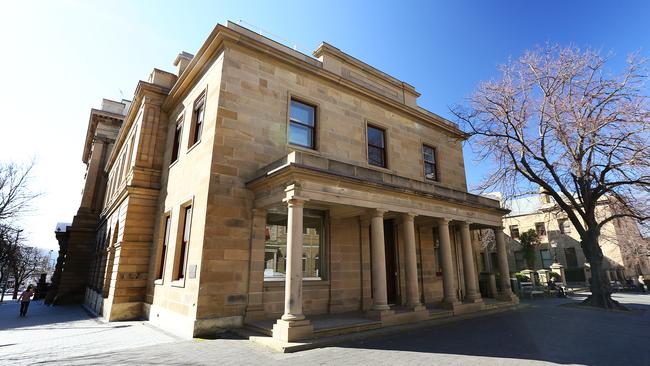Open books on Treasury
EDITORIAL: ONE of the many things that makes Hobart so unique — and that attracts so many tourists — is our colonial architecture.

Opinion
Don't miss out on the headlines from Opinion. Followed categories will be added to My News.
ONE of the many things that makes Hobart so unique — and that attracts so many tourists — is our colonial architecture.
What a waste, then, that one of the finest examples — the neoclassical sandstone Treasury Building one block up from Salamanca — remains locked to the public. Instead, this grand heritage building is the 9-5 home to a small group (about 200) of the state’s 23,000 public servants, and the Government appears to be in no rush to change this comfy arrangement.
The Mercury, then, supports the fresh calls over the past week for the slide rule to again be run over the building — with a view to making better use of it.
Most of the calls have been to sell or lease the building to a developer who could turn it into one of the nation’s grandest heritage hotels.
MORE: LABOR TO MAP OUT TREASURY BUILDING’S FUTURE
Those calls make a lot of sense, particularly when you consider the Government itself has estimated more than 2000 additional hotel rooms will be required in coming years in Hobart, where occupancy rates are above 80 per cent.
The fact is that now is the time to have this discussion. We are riding a wave of good fortune, and investor sentiment in our capital city — and our state — has rarely, if ever, been so positive. It would be a shame to miss this opportunity — doubly so if the Government’s motivation in maintaining the status quo is simply to avoid upsetting a handful of its most senior bureaucrats.
Treasurer Peter Gutwein said the Government had last year investigated the idea of turning the building into a hotel and, based on that advice, had decided against doing anything — mainly due to the fact 1500 additional hotel rooms were already under construction or in the pipeline.
But the discussion should not just assume the building will end up a hotel. Obviously handing it over to a cashed-up developer or hotel chain would be the easiest transaction.
The Treasurer, however, is right to point out that there are “significant heritage and conservation issues” that would need be considered if a developer took over the building.
And so maybe there’s another option. Perhaps the Treasury Building would make an ideal museum, gallery, boutique shopping centre ... or something else altogether.
Labor is therefore right to call for a public discussion about alternative uses of the Treasury Building — to see what ideas emerge, and then treat those ideas on their merits. It doesn’t need to be a formal expressions of interest process, but should be led by the government of the day.
This is also the sort of thinking that could be led by the reinstatement of a state architect, a move set to be debated by the Hobart City Council later this month.
State architects are, generally, charged with ensuring the quality of the design of public buildings and spaces. Tasmania is the only state to not have one, and the Government says there is no need.
Again, the Mercury respectfully disagrees.
Given the right remit, an experienced design practitioner with the experience and knowledge in how to balance the needs of development and heritage actually sounds like just the sort of person Hobart — and Tasmania — needs right now.


